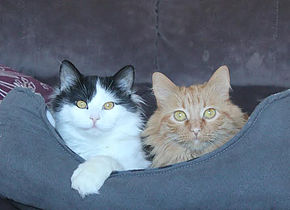Most cats are very uncomfortable with a container being slipped underneath them when they are in their litter box, so it is a bit of a challenge to obtain a clean urine sample from a cat. To aid you in this adventure, we have put together some suggestions to help make the process easier for you. Because all cats are different in their litter box preference, you may need to try more than one of the following suggestions or a combination of a couple of them to find your cat’s preference. Please feel free to contact us at any point with questions.
- First, completely clean out the litter box (washing thoroughly with soap & water to remove any dust), then place the No-Sorb beads in place of your regular litter. No-sorb beads prevent urine from being absorbed. After the cat urinates, the beads and urine can be put back into the collection container and brought to the hospital.
- Cats are sometime texture driven, therefore, other substances can be used in place of the No-Sorb beads. Other safe materials include; dust free dried beans, polystyrene packing peanuts (non-dissolvable), or clean aquarium gravel.
- Another method is to place a piece of plastic sheeting over the existing litter. This can be done with a couple of layers of saran wrap or by placing the entire litter box in a plastic garbage bag. Make sure the plastic lays flat against the litter. The cat will feel the litter under their feet and use the box as they normally would. You can then retrieve the urine sample with the syringe provided.
If your cat is uncooperative in any of the above methods, we can help by setting up an appointment for a cystocentisis. Cystocentisis is done by passing a needle into the bladder and obtaining a sample directly. Although this sounds unpleasant, it is surprising how well cats tolerate the procedure. It is important to keep your cat away from their litter box for at least two hours prior to this appointment.
After obtaining the sample, it is extremely important to get the sample to us in a reasonable amount of time. For best results, the sample should be processed within 2 hours after collection. If that is not possible, the sample should be refrigerated and tested within 6 hours.

